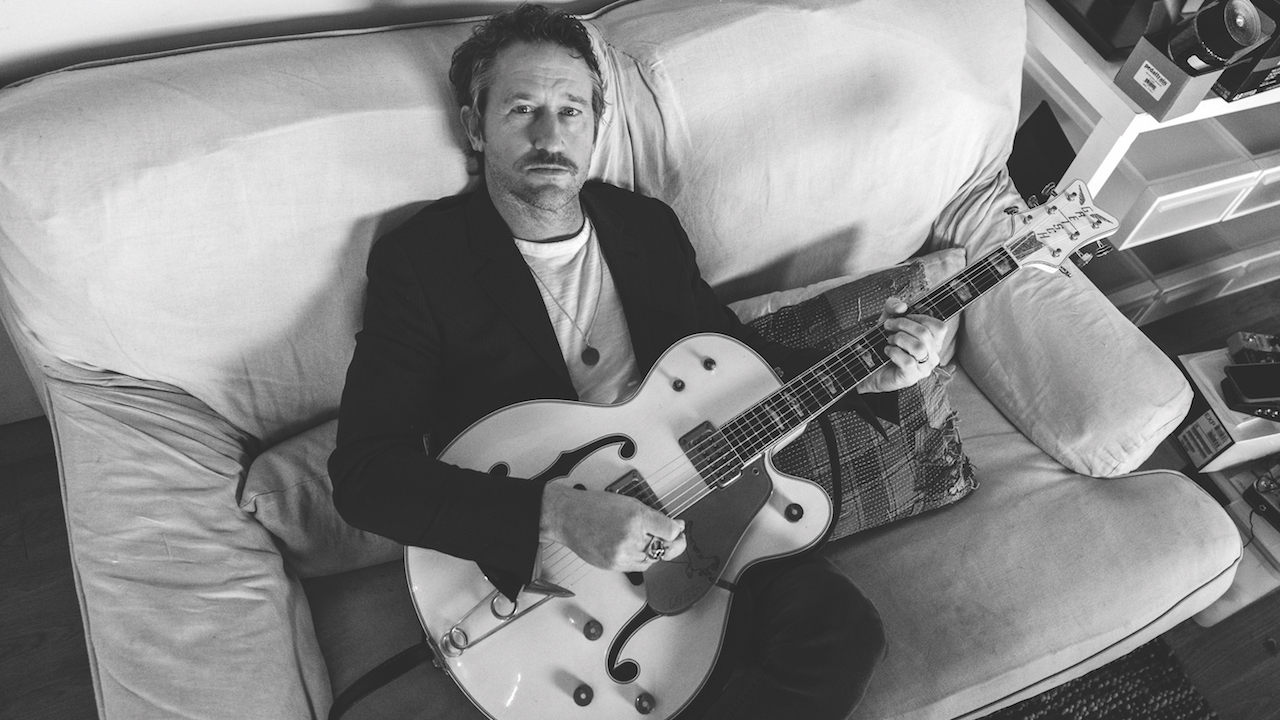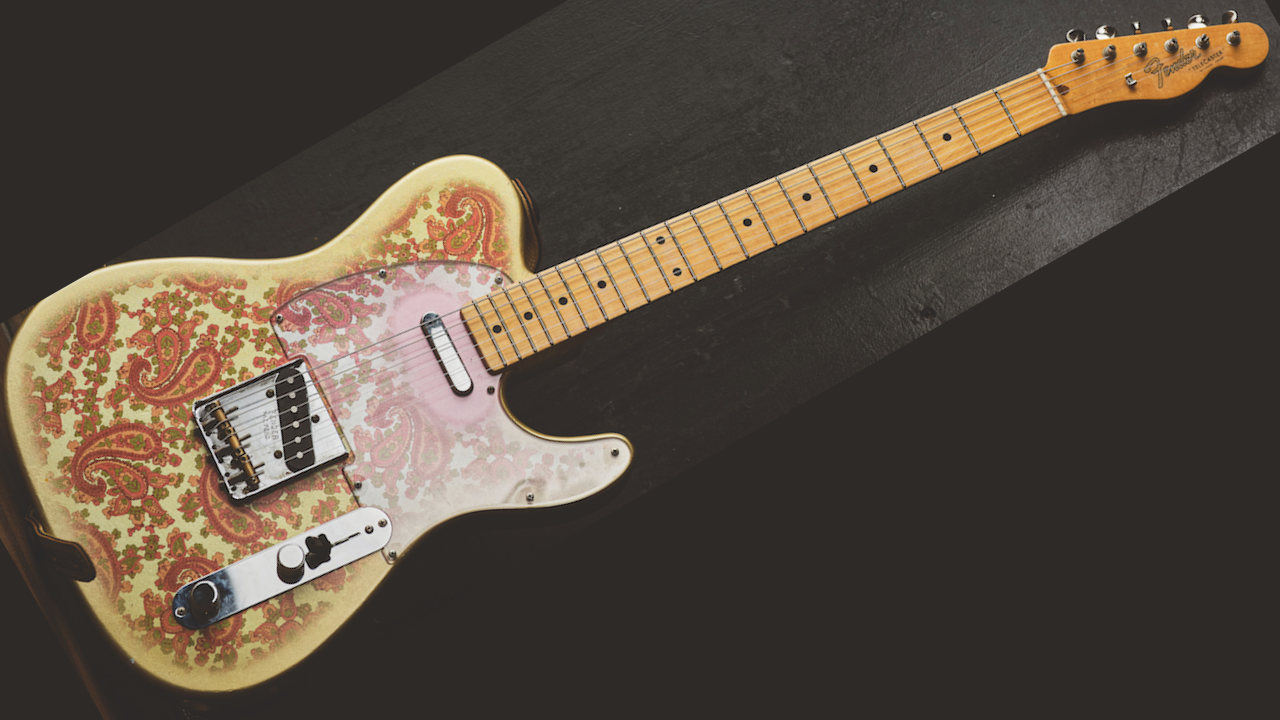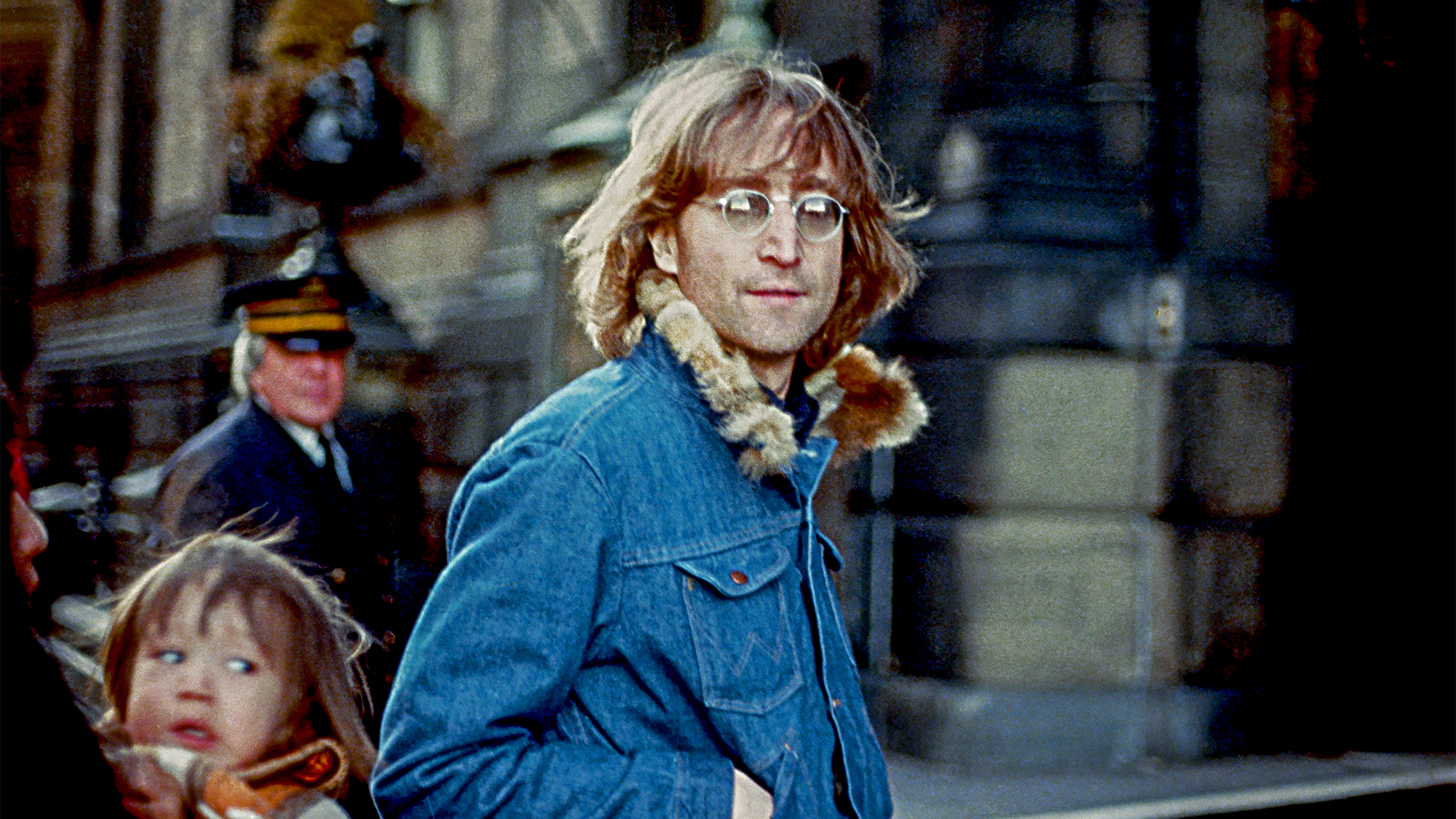“We worked out a big, long harmonized guitar solo. It’s my little homage to Thin Lizzy.” Foo Fighter Chris Shiflett on his new solo album Lost at Sea and why he's happy to not be the loudest guitarist in the room
After he regretted not playing more guitar on his solo albums, Chris Shiflett assembled a six-string dream team for Lost at Sea. The result is a treat for the ears
Rock stars tend to get a pass for being all over the place, literally and figuratively. But no one can accuse Chris Shiflett of being anything other than dedicated to guitar playing. As Dave Grohl’s wingman in Foo Fighters for nearly 25 years, he’s wrangled a variety of guitars. But he’s also filled all of his free time from that band making music both with other acts and as a solo artist.
“More and more, I just like to be playing all the time and working on music,” Shiflett tells Guitar Player from his home in Southern California, where he’s preparing for the October release of Lost at Sea (Blue Élan), his third solo album, amid another busy season with his day gig.
Shiflett is well acquainted with juggling responsibilities. During his late-’90s tenure with speedy punks No Use For a Name, and for a number of years as a Foo Fighter, he also played guitar with the punk supergroup/cover band Me First and the Gimme Gimmes. Since those days, though, he has embraced the Bakersfield country sound and spun it into his own country-rock hybrid.
On Lost at Sea, he delivers it in spades, with a little help from a few hired guns. After playing all the guitars on his two previous solo albums — 2017’s twangy alt-country West Coast Town and 2019’s more rocking Hard Lessons — Shiflett chose to surround himself with a trio of Nashville’s top hired guns: Tom Bukovac, Charlie Worsham and Nathan Keeterle.
With Jaron Johnston of countryrock trio the Cadillac Three producing, Shiflett and his crew let loose on 10 songs packed with layers of guitars, all of it recorded in Nashville and at the Foo Fighters’ own Studio 606 in L.A.
You also called up a dream team of Nashville players. That had to have played a big part in it.
Yeah, and we’re all so different from each other. When I’m in the room with those guys, when we’re recording the basic tracks, I just love it, ’cause I’m holding down the song, the chords and what I wrote, and trying to get good takes of that. And then you’ve got those other guys, who are just weaving in and out of different things.
All the latest guitar news, interviews, lessons, reviews, deals and more, direct to your inbox!
We’ll do a couple takes, and then they’ll switch it up and we’ll do a couple more. You wind up having this immense batch of choices. They give you all these colors, and you can pick and choose what needs to be in there, bouncing off whatever I’m doing.
You recorded the basic tracks live in a room with just those guys?
All of it, yeah. Some of the guitar solos were in the room, like “Dead and Gone.” For “Where’d Everybody Go,” me and Nathan worked out a big, long harmonized guitar solo. It’s my little homage to Thin Lizzy. It’s just me and him playing over the basic tracks together.
I’d done a demo of it, and I don’t even remember how we landed on us doing it together, but Nathan’s doing all that cool slide stuff through it, and I’m playing the more riffy thing. We worked it out quickly. It’s Nashville — all those guys are incredible players, so he picked it up right away. And then some of the tracks I would take back to 606 and write ’em out a little bit more.
I always look at my records and go 'Why din't I play more guitar?' I don't feel that way about this one
It’s licks on top of licks right out of the gate with “Dead and Gone,” and then your solo comes in with this elastic tone.
That was just in the room from the first session we did. I had an [Electro-Harmonix] Micro POG pedal that normally I’ll only use sparingly, here and there. It doesn’t really sound good to play that thing with chords, but for that song I just left it on the whole time. It’s just kind of nasty and fucked up.
You've got Buk doing that more kind of swampy tremolo guitar thing and then Charlie playing the acoustic stuff, so it just sat nice with it. And then I just loved it on the solo, too. It’s got that tweaky, almost keyboard-sounding thing to it.
What was it like being the ringleader in that room?
I don’t view myself as the ringleader in that situation. I mean, in a sense, it is my session, but I’m leaning on everybody else in the room a lot and I don’t want to meddle too much in what they’re doing. I like when you’ve got a bunch of different guitar players on a track, because on previous records, where I’ve been playing all of the electric guitar, I start to get bored with myself.
I like to have other people bringing their ideas to it. I don’t know how much they get policed on other sessions, but I don’t think I said shit to any of ’em about what they were planning to do. It was “just let it roll and see what happens.” There was never anything I didn’t like or felt like I needed to change.
There have been points when I felt stagnated. The way out of that is just to play all the time
Songs like ‘Black Top White Lines” are so riff driven. I feel like of all the songs, that’s where I hear Jaron’s influence most.
Big time. When we wrote that song, it was me and him and John Osborne from Brothers Osborne, and he had already demoed the riff. We were thinking, What should we work on? He played it, and we were all just like, Yeah, that’s what we need to work on. [laughs] There’s something there that felt fresh to me and different, and I just felt like I wanna chase this down and make a whole record here. So those songs were the roadmap for the rest of it.
Were there any moments where something those guys did changed your perspective on a song?
On “Damage Control,” Charlie’s acoustic guitar part wound up being the hook for the whole thing. It immediately took it into a completely different territory for me, and I think maybe he doubled it with a banjo or did some banjo thing in there too. I keep meaning to sit down and isolate that track and try to figure out what he did, because that was not on the demo; that was just him being Charlie.

I was probably halfway through listening to the track before it dawned on me that it was a reggae song.
You know, when I wrote that song, I was thinking of late-stage Clash — even Cut the Crap–era Clash. There are a couple of good songs on that record, and the production is so bad in a mid-’80s way that I actually kind of like. It’s so thin and janky. And I remember saying to Jaron, “Let’s make it sound like that.” Which we didn’t [laughs], but I took it back home, busted out my Echoplex and just went crazy, hitting stuff and sending it through the Echoplex and trying to make dub sounds.
You’ve got the signature Fender Telecaster and a bunch of other stuff going on. Let’s talk about what you used on the record.
When I would go out to Nashville, I used my butterscotch Custom Shop Tele that I’ve had for years. It’s been my main Telecaster for a long time. Because I was just flying out there for, like, two days or something,
I would literally just bring that and some pedals. Jaron would bring some amps down. I don’t even remember what the amps were — they were boutiquey little things he had — and I would pretty much record all the basic tracks with that and whatever pedals I had laying around. It was the [EHX] Micro POG, a [Menatone] Red Snapper, probably a [Strymon] TimeLine delay — you know, just grab some stuff, throw it in there.
Usually I have an [Xotic] EP Booster on whatever board I’m using, and probably your go-to MXR flanger or phaser. Then back home, I’m sure I used my Fender “Cleaver” Telecaster, my fancy signature model. I’m sure it got on there, along with some Les Pauls. I should really keep notes on that stuff, but I don’t. [laughs]
Do you get into pedal layering?
In the studio, I just find the tone I want and go. Live, I like to use a lot. Across the board, I like amp gain more than I like pedal overdrives. In my solo stuff, I’m usually playing a little combo, like a Princeton Reverb, so I wind up using overdrives with that.
In Foo Fighters, I’m A/B’ing live between a Friedman and a Vox, and I have the Vox set to a kind of jangly tone, not really gained out, so I’ll throw a KTR Klon in front of that sometimes, but that’s about it. With the Friedman, I just run it hot, at seven or eight on the gain, and then I use my volume knob on the guitar to roll it on or off if I wanna clean it up.
Between Foo Fighters and your solo work, you’re constantly busy. Does that help or hinder your playing?
It has been easy at points in my life, when I’m on a break or something, to not pick up my guitar for a few days. There have been points when I felt like I hit plateaus and stagnated a little bit. And for me, the way out of that, or the way to avoid that entirely, is just to play all the time.
I think that the older I get, I become aware of the idea that time is running out, and there’s a lot I want to do, musically. I’m so lucky to get to do this all the time that I just want to do it all the time.
Stepping out: Chris Shiflett‘s solo pedalboard
Take a tour of Chris Shiflett’s solo pedalboard and you’ll find this sometime punk isn’t shy of a stompbox, with his collection spanning from MXR’s Phase 95 to the DigiTech Drop and Wampler Tumnus. But the biggest departure in his modern club-show rig, the guitarist reminds us, is the absence of the traditional backline mothership.
“Oh, man, this setup that I’m playing with now is so crazy. I just got one of those GigRig G3 channel switchers, and I’m not even playing through an amp right now — I’ve got a Strymon Iridium instead. You can arrange it however you want, but I have it so it’s all the effects first and then a Strymon Deco, then the Iridium, the Strymon TimeLine and the Strymon Flint. And then I have it coming out stereo on one of those Walrus Canvas DIs.”

Isn’t the Iridium a big departure for a valve amp aficionado?
“100 percent,” Shiflett affirms. “Of course, my preference would be a wall of amps. They’re beautiful and everything. But you’re hemmed in with budgetary realities in this solo thing, y’know? And just to know that every night, the tone is gonna be unaffected by power or air in the room or somebody’s bad EQ-ing. I mean, I guess it still could be, but you know what I mean — it’s just a little more direct, a little easier with the Iridium. And those things sound fucking great, man. They really do.”
Lost at Sea by Chris Shiflett is available to buy or stream now
Jim Beaugez has written about music for Rolling Stone, Smithsonian, Guitar World, Guitar Player and many other publications. He created My Life in Five Riffs, a multimedia documentary series for Guitar Player that traces contemporary artists back to their sources of inspiration, and previously spent a decade in the musical instruments industry.

